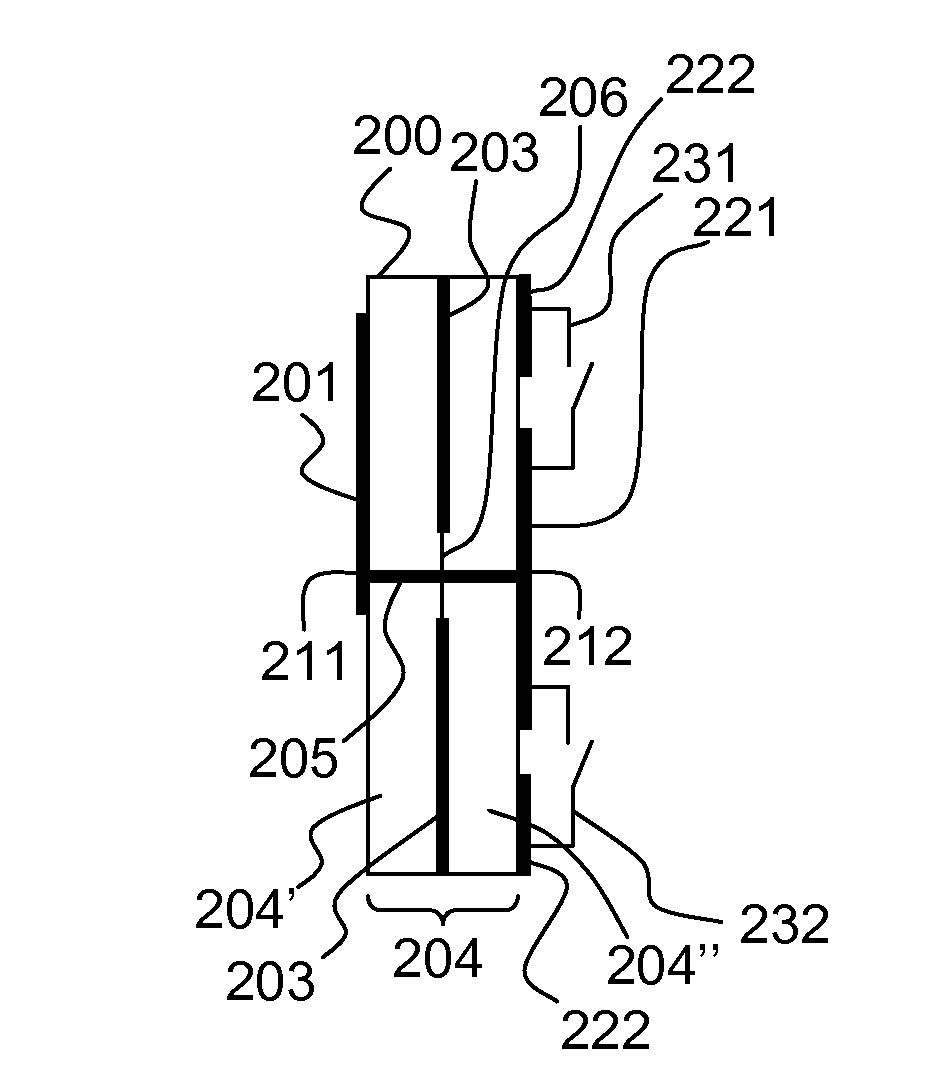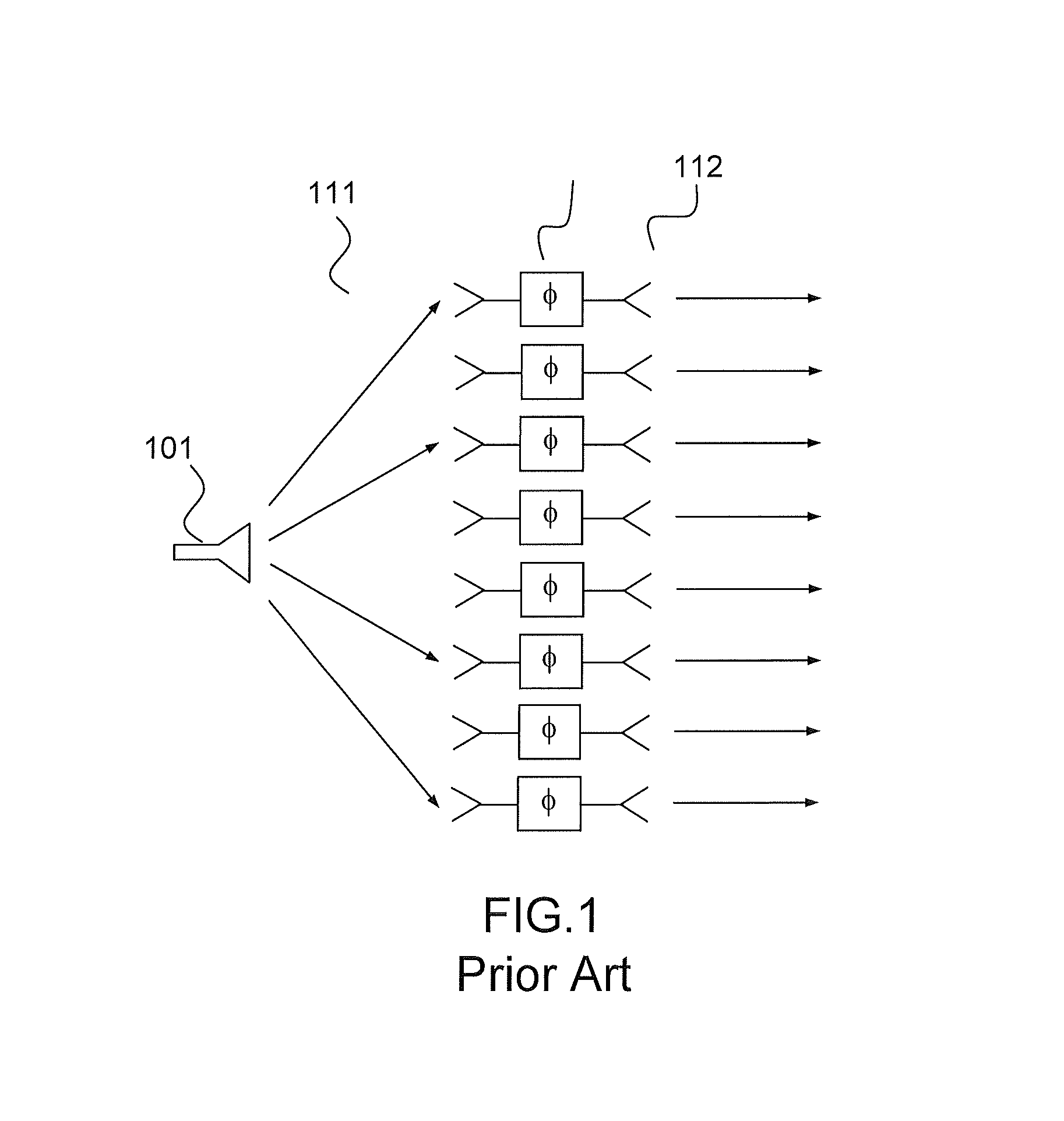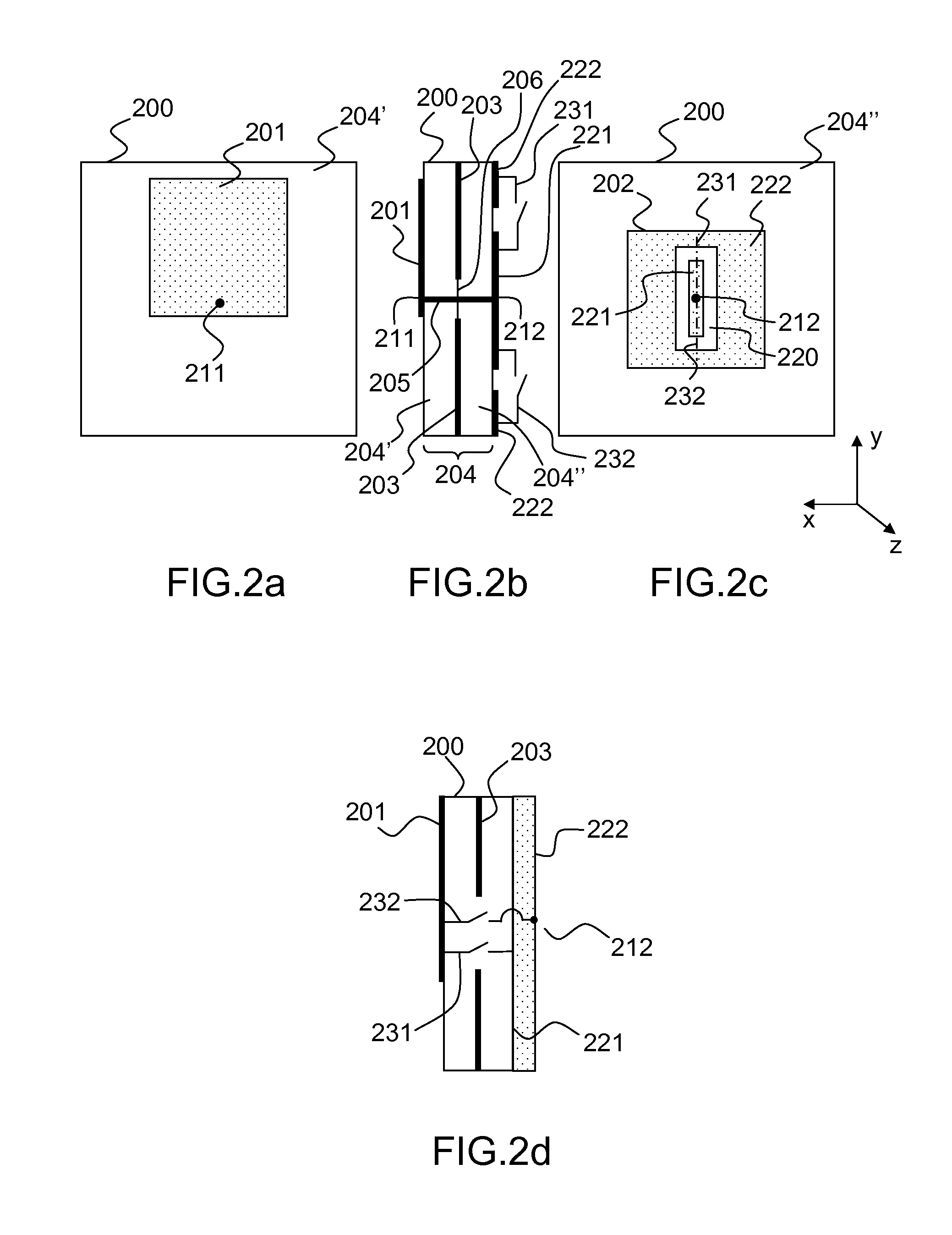Radiating cell having two phase states for a transmitting network
- Summary
- Abstract
- Description
- Claims
- Application Information
AI Technical Summary
Benefits of technology
Problems solved by technology
Method used
Image
Examples
first embodiment
[0064]FIGS. 2a, 2b, 2c and 2d present a cell according to the invention. FIG. 2a is a view from below of the cell 200, FIGS. 2b and 2d are a cross-sectional view of the cell 200 and of its variant respectively, and FIG. 2c is a view from above of the cell 200.
[0065]In this example, the cell 200 comprises two elementary antennas arranged on either side of a ground plane 203.
[0066]More particularly, if it is considered that an elementary antenna comprises a radiating element separated by the ground plane from at least one dielectric layer, the cell 200 therefore comprises a first radiating element 201 and a second radiating element 202 arranged on either side of the ground plane 203 hugged in an assemblage 204 of at least two substrates (or substrate-forming dielectric layers) 204′, 204″.
[0067]Each elementary antenna can be embodied by a planar or patch antenna which is a plane antenna whose radiating element is a generally square conducting surface, separated from a conducting reflec...
second embodiment
[0105]A second embodiment is illustrated in FIGS. 3a, 3b and 3c.
[0106]FIG. 3a is a view from below of the cell 300, FIG. 3b is a cross-sectional view of the cell 300, and FIG. 3c is a view from above of the cell 300.
[0107]In the example of FIGS. 3a, 3b and 3c, the connection point 311 of the first radiating element 301 is situated at the center of the surface of this element 301, so as to minimize the bulk of the cell, since the two radiating elements 301, 302 lie face to face.
[0108]In order to ensure satisfactory operation of the first radiating element 301, a U-shaped slot 320 is formed around the connection point 311, in such a way that the connection point 311 is situated on a conducting band 341 formed inside the U, this conducting band 341 culminating at the level of the periphery 361 of the first radiating element 301. The conducting band 341 therefore acts as a conduction line making it possible to efficiently excite the first radiating element 301 at the level of its perip...
PUM
 Login to View More
Login to View More Abstract
Description
Claims
Application Information
 Login to View More
Login to View More - R&D
- Intellectual Property
- Life Sciences
- Materials
- Tech Scout
- Unparalleled Data Quality
- Higher Quality Content
- 60% Fewer Hallucinations
Browse by: Latest US Patents, China's latest patents, Technical Efficacy Thesaurus, Application Domain, Technology Topic, Popular Technical Reports.
© 2025 PatSnap. All rights reserved.Legal|Privacy policy|Modern Slavery Act Transparency Statement|Sitemap|About US| Contact US: help@patsnap.com



